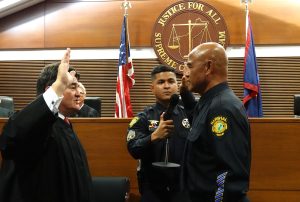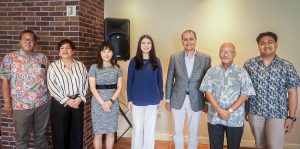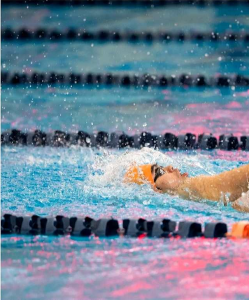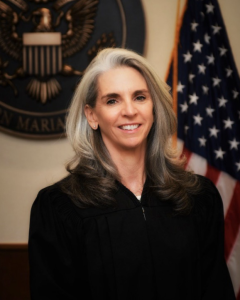Weekly Chamorro-Carolinian Cultural Roadmap unveiled
The CNMI’s identity, pride, and indigenous way of life is something to be shared not once a year but constantly, and to better do this, especially during Chamorro and Carolinian Heritage Month, a cultural learning experience will now be held be held every week at the NMI Museum of History and Culture and the Carolinian Utt in Garapan.
Beginning last Friday, the Chamorro-Carolinian Cultural Roadmap will be a stop for community members, students, and tourists alike to learn about the cultures of the indigenous peoples of the CNMI.
It will showcase live demonstrations of the rich cultural aspects of growing up in the Marianas—from coconut weaving and oil making, mwar compositions, and Lighatúttúr beading, to traditional Chamorro and Carolinian dances, ancient storytelling, playing the ukelele, and even fishing techniques like talaya and lure casting.
Indigenous Affairs Office resident executive Luella Marciano said they are looking forward to including two more experiences such as fish processing and amut or local medicine composition.
She shared that the program demonstrations begin at 9:15am and wrap up just before 12pm. During that time, students will go through and participate in stations at the NMI Museum such as mwar making, ancient storytelling, local chanting, coconut oil making, Carolinian dancing, and sinahi artists. They will then later go to the Carolinian Utt to learn Chamorro dances, basic ukelele playing, banana art, Lighatúttúr beading, and fishing lures and talaya casting. She credited NMI Museum executive director Leonard “Leni” Leon for the initial idea.
Leon shared with Saipan Tribune the inception of the Chamorro-Carolinian Cultural Roadmap Cultural Roadmap.
“So, there are three components to this program. One is for the Public School System’s Chamorro-Carolinian Language Heritage and Arts Program. It’s also for public and then the third part is for tourists. It’s to provide some space for everybody to come together, but mainly for PSS students from different schools to come together in a cultural space during regular school hours. It’s a little more exciting and an incentive for being a CCLHS student.”
He said the goal was to provide opportunities for CCLHS students to visit Chamorro and Carolinian cultural sites and learn about the cultures as well as to participate in cultural activities. Alongside the students, the program was also made for the benefit of tourists and community members who want to learn more about the indigenous cultures of the CNMI.
Leon also explained that although the NMI Museum proposed the idea, bringing the Chamorro-Carolinian Cultural Roadmap to life was a joint effort between PSS and the Chamorro-Carolinian Heritage Month Committee. The committee consists of the Office of Indigenous Affairs, Carolinian Affairs Office, Commonwealth Council for Arts & Culture, Marianas Visitors Authority, Northern Marianas Humanities Council, Women’s Affairs Office, Saipan Mayor’s Office, Northern Islands Mayor’s Office, and the NMI Museum of History and Culture.
“It was really everybody’s inputs that really shaped the program to what it is now,” he said.
Leon added that another goal of the program—the reason why both cultures are mingled and showcased at each site—was to display that both indigenous groups can be in the same space without butting heads.
“That’s one of the goals. It is to showcase that a space can be created for them to unite, but then also, as a CCLHS program, to show everyone that the Chamorros and the Carolinians cultures can unite and be in the same space without clashing.”
Marciano echoed the same sentiment while mentioning the cultural diversity of the CNMI.
“Culture is very important. It is our identity. Much like a fingerprint. So, for us we need to celebrate it not only in September, but every day. That’s the message—let’s celebrate. If you’re a Chamorro, Carolinian, Palauan, whatever ethnic background you may have, anybody that came here to make the CNMI their home and celebrate your culture. It is you. So, our message to the public is to stand up and celebrate, showcase who you are and bring in your culture so that we can understand you better. In doing that we can live harmoniously. The CNMI has such diverse islands full of cultures. Here on Saipan alone, we have a lot of diverse cultures. So, every day it needs to be celebrated. Each one of us is like a fingerprint of our own. In order for us to respect and understand each other, let’s promote and showcase so that we can understand, this is how we can understand each other and live harmoniously.”
Attendees of the Chamorro-Carolinian Cultural Roadmap expressed their gratitude for the program.
“Thank you! A big thank you to them,” said Chamorro dance demonstrator April Repeki. “Because if it wasn’t for them, we wouldn’t be able to expose or showcase the art of the Marianas and then to have it also passed down. They don’t have to be Chamorro, Carolinian, but at least they understand where it comes from and that it’s going to continue to be passed down to the next artist, a person who has that interest to do what we do.”
She also shared the importance of perpetuating culture.
“It’s what identifies us as Chamorro and Carolinian people of the CNMI, right? Through art, through weaving, and through dance, through music, through the Lighatúttúr making. It’s so important that we need to continue to expose our culture so that the youth, not only our Chamorro, Carolinian children, but whoever lives on the islands know about our culture.”
Leanna Borja, a CCLHS teacher at Koblerville Elementary School, also shared her gratitude for the launch of the Chamorro-Carolinian Cultural Roadmap.
“It’s a beautiful thing to watch, having this collaboration with the schools. It’s giving the kids or students something to look forward to, and they’ll be able to learn something about our culture and the resources we have on island. Hopefully it’s something that they can pick up and share with their families, their friends, and through it hopefully we can promote and perpetuate it even more. To those who made this happen Si Yu’use Ma’åse and please continue doing it. We need to push and encourage our kids every chance we get.”
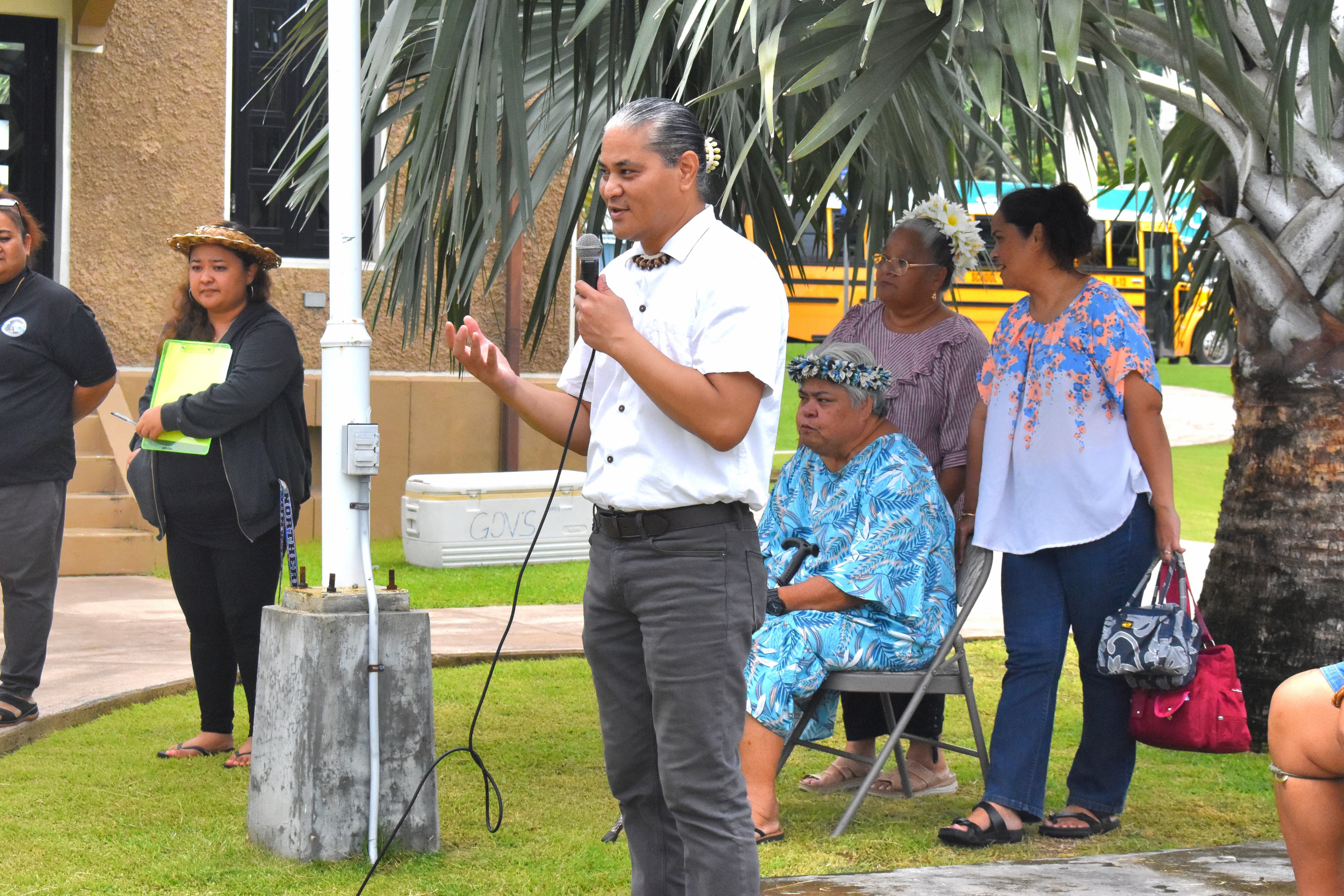
NMI Museum of History and Culture executive director Leonard “Leni” Leon speaks to students just before start of the first Chamorro and Carolinian Cultural Roadmap last Thursday at the NMI Museum in Garapan.
-CHRYSTAL MARINO

